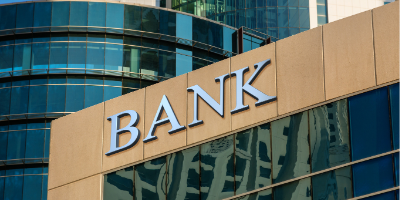By Fred Fuller, Global Head of Banking at Endava.
Neobanks have been on the rise for several years now, but 2024 has been particularly notable in seeing their influence grow across the UK banking landscape. Monzo raised almost £500m in a recent funding round and Starling Bank experienced a revenue jump of 50%. As these ‘challengers’ make gains on the banking sector, traditional banks are grappling with modernising their tech stacks to maintain pace. To attract and retain consumers, they’re turning inward to look at how they can roll out strategic initiatives including modernising their core systems and improving both the digital and the physical customer experience, according to Endava’s Retail Banking Report 2024.
A Consumer-Led Approach
Finances and emotions are intrinsically interlinked, with money concerns front-of-mind for a significant amount of the UK population. When undertaking any digital transformation (DX) project, it’s therefore more important than ever for financial institutions to show awareness of this by placing a heavy emphasis on user-experience and building the necessary capabilities into core and back-end systems.
Currently, 88% of banks believe they provide a good user experience, but can omnichannel strategy compete and maintain pace with the demands of the market? As customer expectations grow and evolve, this will depend on how ‘frictionless’ their experience is, with consistency needed across all aspects, from physical branches and telephone calls to mobile apps and the website.

The Role of Data
A critical part of any successful omnichannel strategy is insights and connections driven by data. If a user interacts with the bank on one channel, there is an expectation that this interaction will be seamlessly transferred to continue on a different channel, without interference or the need to start the process again. However, for this to become the norm, data must be readily available and shared across all channels, simultaneously avoiding silos while maintaining security and regulatory standards.
External Threats to Innovation
In addition to strong data capabilities, the private nature of financial information and ever-growing threat from cyber-criminals can make the prospect of change overwhelming. Luckily, with innovation comes legislation, guiding institutions to better protect consumers. From the Data Protection Act 2018 to the standards set out by the Financial Conduct Authority, financial institutions must ensure compliance with a range of regulations, dependent on where they operate. Though necessary, this is yet another factor that makes omnichannel DX a daunting prospect, as business leaders attempt to merge security concerns with ease of consumer journey.
To ensure compliance with both legislation and consumer expectation, banks should rely on a data-driven foundation that allows each channel and touchpoint to be part of the information loop. This will require them to lean into their own digital transformation, adopting technology that reflects both security standards and ease of access.
Future Trends
In the next decade, it’s expected that an increasing number of financial institutions will invest in the ‘digital shift’, moving operations from brick and mortar to primarily online (even more so than now). This requires investing in core modernisation using a range of technologies to keep at the forefront of customer expectations and – critically – remain competitive with those neobanks who have surpassed ‘challenger’ status. At present, AI is the top area for investment (50% of financial institutions surveyed in the 2024 report), while digital ecosystem sits at 35% and omnichannel sits at 17%. Banks are aware of the importance of digitalisation and, considering their plans to use data to improve customer service (37%) and increase customer retention (29%), the demand for solutions that facilitate a smooth omnichannel experience will continue to increase.
To get ahead in such an evolving landscape, banks must ensure that each aspect of their offering, digital to physical, is seamlessly integrated and able to work as a single entity. Those who neglect to do this risk losing customers to neobanks who provide a seamless experience from digital account opening to in-branch conversations.







